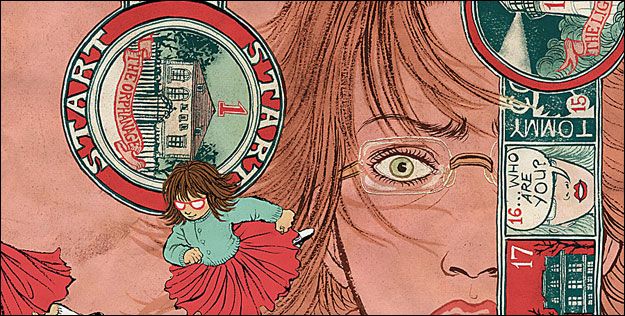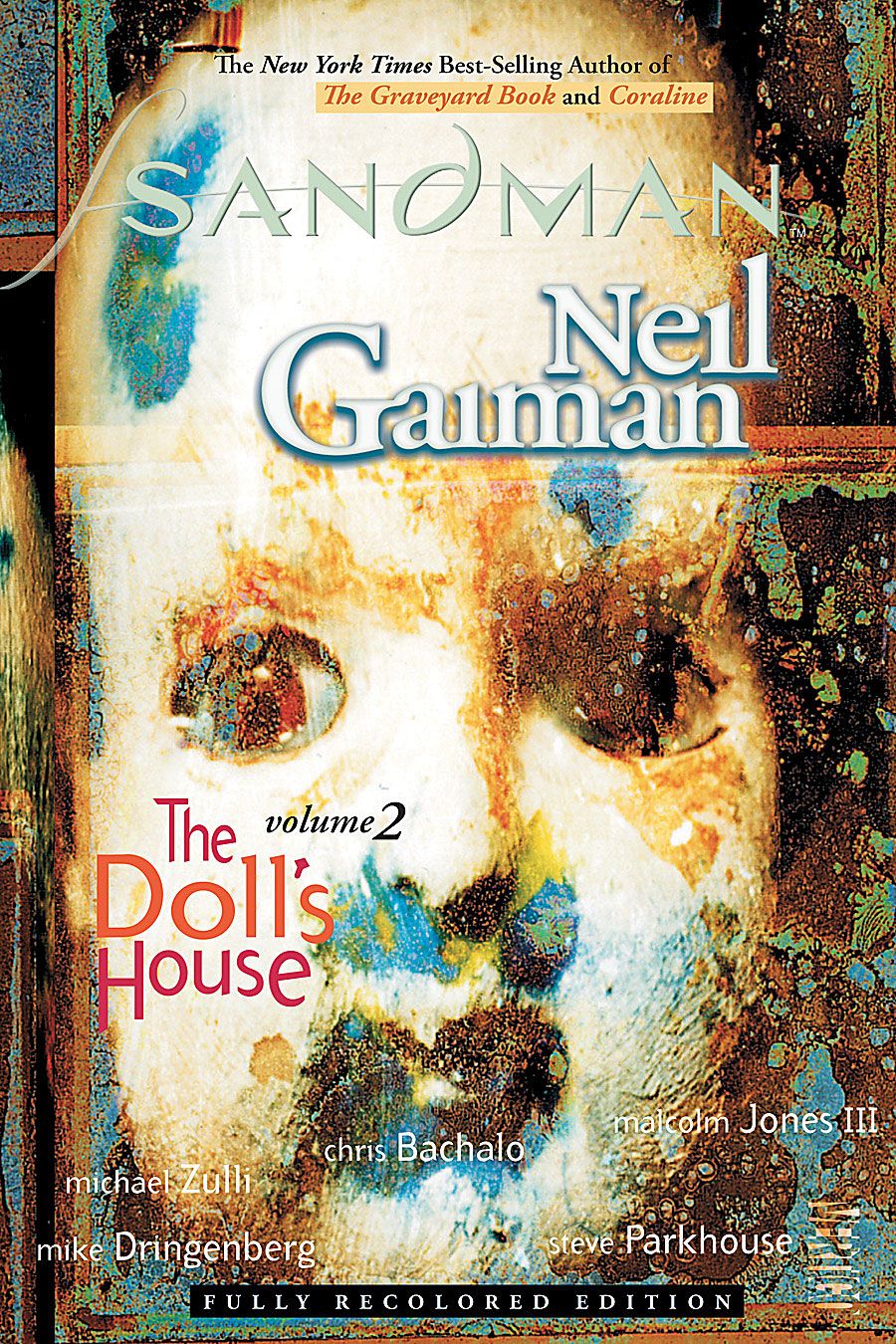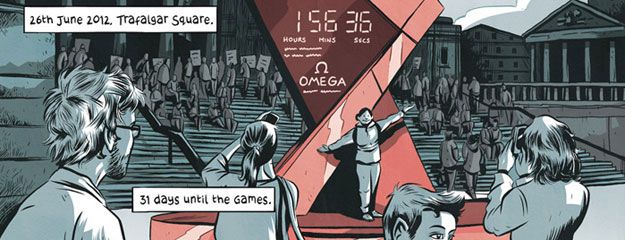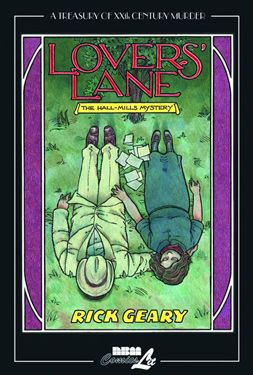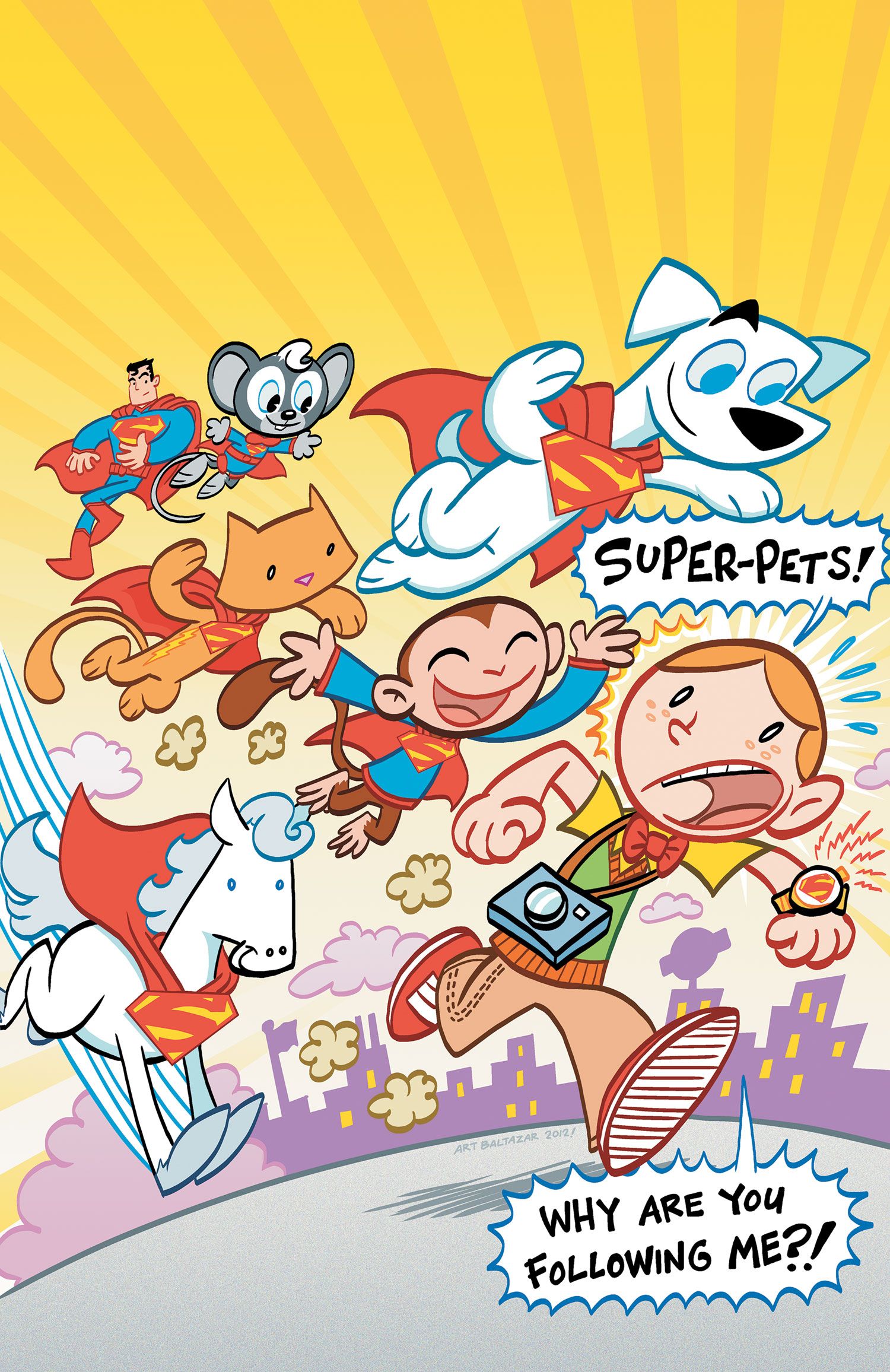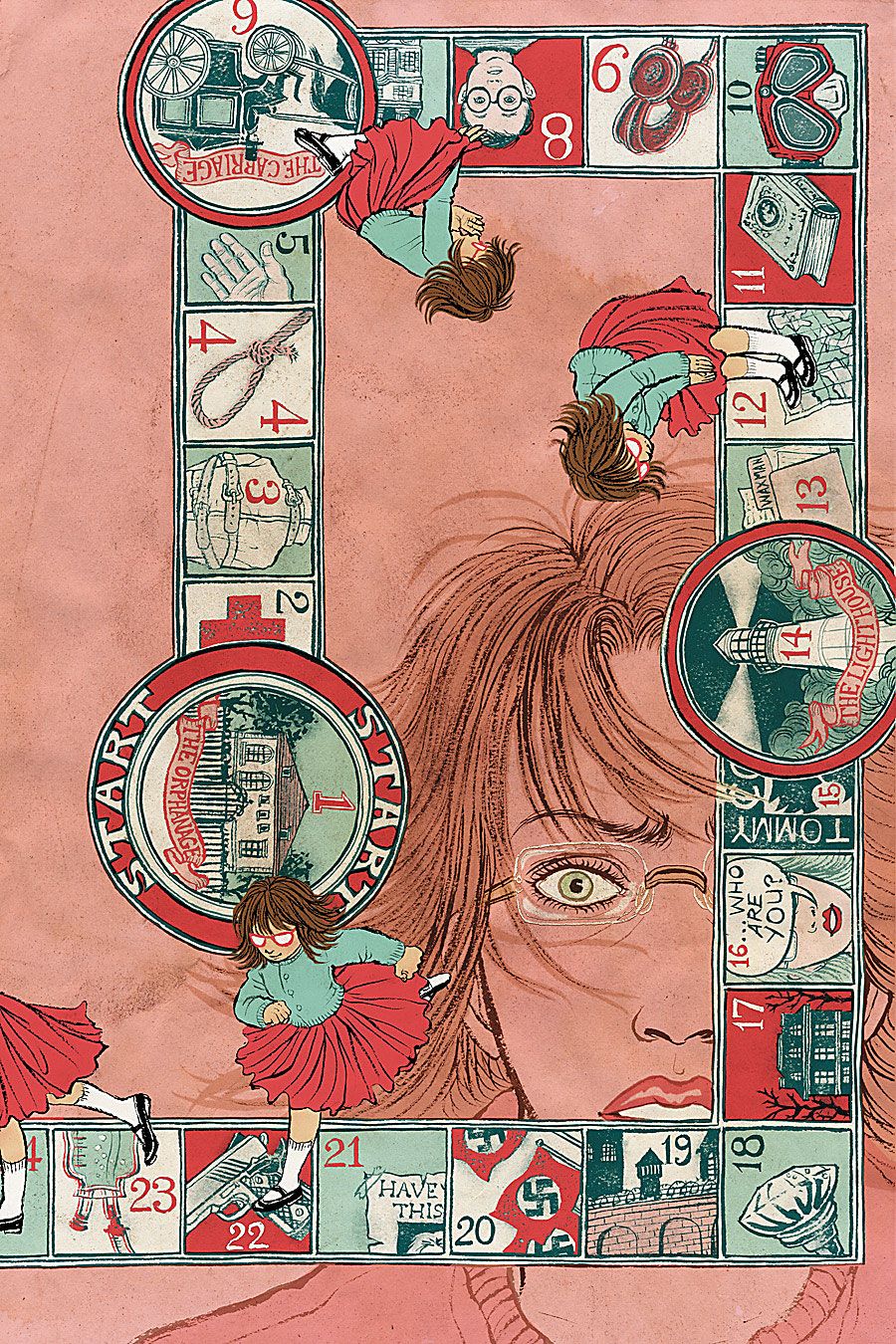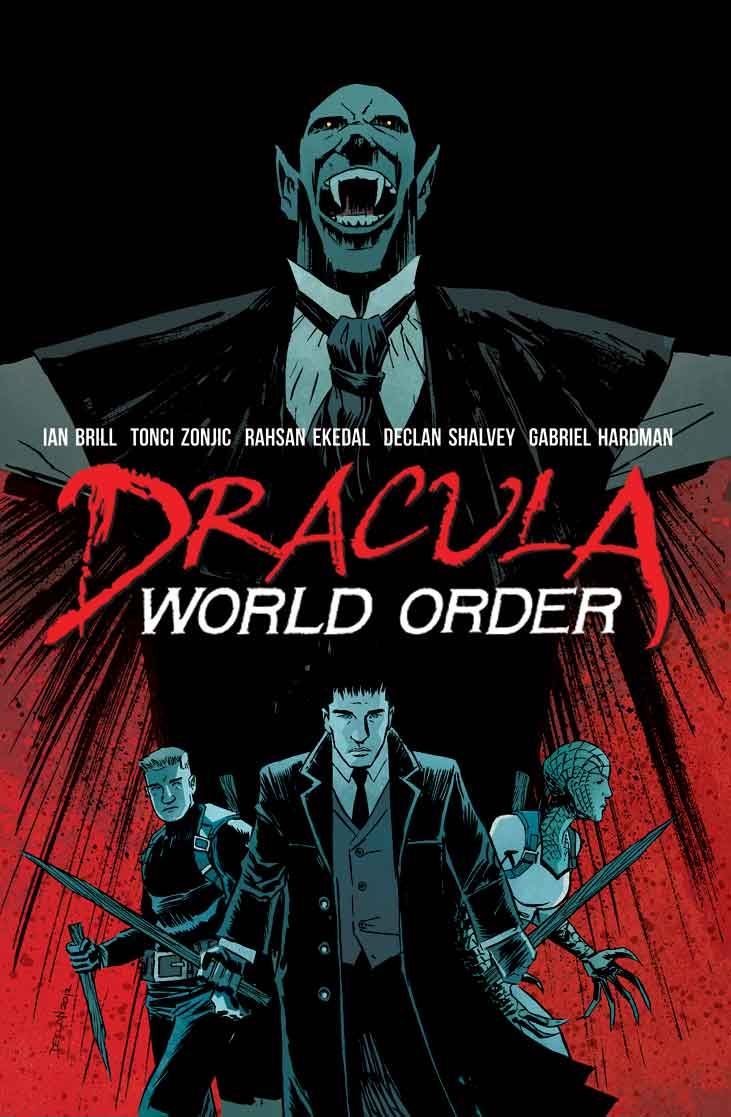Hello and welcome to What Are You Reading? Today our guest is Mark Sable, the writer and co-creator of Image’s Graveyard of Empires with Paul Azaceta and the upcoming Duplicate from Kickstart Comics with Andy MacDonald. You can find his work and thoughts at marksable.com and contact him @marksable on the Twitter.
To see what Mark and the Robot 6 crew have been reading, click below ...
*****
Corey Blake
The Sandman: Doll's House [Recolored Edition]
Yes, I'm ashamed to say I've never read Sandman (or "The Sandman" as it's actually called), so the recently recolored soft covers are giving me a great excuse to do some overdue catching up. I was sad to see Sam Keith leave so early on but reading this collection really affirms Dringenberg's and Malcolm Jones III's skills as storytellers that will adapt to the needs of the story to give the greatest experience instead of holding fast to a signature style. The final chapter has a textured quality to it that recalls techniques usually reserved for illustrated books, but the chapter before it tends more to angled and distorted characters. The first chapter takes on a charcoal effect toward the end. The two artists are adept at nailing some of the more abstract ideas and visuals in Neil's script, using tricks like tipping the orientation of the panels on their side to reinforce the off-balance nature of dreams. Despite the variety, it's always in service of the story, so instead of getting pulled out, I'm just pulled in deeper. These stories sing more clearly thanks to Lee Loughridge's new colors from Zylonol Studio. Todd Klein is really revealed as the master. Again, his lettering is in service to the story, magnifying character's unique voices or accentuating the chaos of nightmares, but never ever sacrificing legibility. The stand-out stories are the prologue "Tales in the Sand" and "Men of Good Fortune", which features guest art by Michael Zulli traveling through the past 100 years at a time, making for a fascinating environment study. The entire package builds Neil Gaiman's rich yet personal tapestry of what we create in our subconscious.
I always read this web series but it's kind of frustrating for me. I love that the silly comics industry is being satirized, but the teeth often aren't sharp enough. This week though had one of the funniest visuals the strip has had since the skipping multi-colored Hulks. Ryan Browne's Daredevil typing on a cat with both in absolute panic was a hoot. If they can't Doonesbury the comics industry, then I hope they embrace this kind of absurdity.
As counter-point, Sean Whitmore and Brandon Hanvey continue to perfectly satirize comics fans and their respective superhero/indie camps, with Brandon's art growing in leaps and bounds. The current storyline of the two main characters trading comics reviewing duties has been fun and completely on the nose in depicting either fan type's style of elitism. The break they took recently has really served to re-inject some kick into this funny web-comic.
What Were You Raised By Wolves?
Vera Brosgol completely won me over when I first read Anya's Ghost, and I just noticed this short story on her website. It's a funny premise that gives us a fun but also surprisingly dark and sad story of a girl raised by wolves that tries to re-enter the world. Vera comes from animation and her style clearly brings that to her comics, but that doesn't mean she doesn't know how to communicate with comics. Her pacing and page layouts are fluid, efficient and clearly communicate without the use of any dialogue (and only a couple of signs and sound effects). Vera and this story are a reminder to never underestimate the crucial storytelling tools of keeping it simple and clear.
Mark Kardwell
I've been going through the archives at Cartoon Movement, after seeing Tom "Solipsistic Pop" Humberstone's strip about the Olympics being RTed repeatedly in my Twitter feed. Humberstone is becoming a fine cartoonist, something I hadn't noticed before, thinking of him primarily as a great editor/publisher. I went to the site this morning to fetch the link and noticed it was down. Bloody Illuminati, at it again.
I read Alfie Gallagher's self-published Charlatan's Tales, which I got through his Etsy store. Alfie is an illustrator by trade, but just like everyone* else in that profession, harbors a not-particularly-secret longing to work in comics. He's got a lovely line, and tells a good story. Often funny, often thoughtful stuff.
This week, Operation Bring The Boys Home meant I retrieved the massive Jaime Hernandez Locas volume and the Marvel Visionaries: Steranko collection from the attic of the old family homestead, in both instances due to the influence of recent pieces by my fellow Robot 6-ers. Back in the Eighties I too was often made to feel like I was superficial for preferring Jaime's work to Beto's, but I think history has proven we Jaime lovers backed the right horse. Seneca's pieces on Steranko always made me want to go back and pore over the material, and this time the opportunity arose, and I grabbed it, along with the amazing old hardcover UK edition of Jaunty Jim's run on Cap that I've held onto since childhood.
Brigid Alverson
First up this week is Rick Geary's Lover's Lane: The Hall-Mills Murders. I like mysteries and true-crime books, but Geary's last book, on the Sacco and Vanzetti case, struck me as very static. I appreciate his detached storytelling style—reading it was like watching a PBS documentary—but the heavy frames around the panels, the poses of the characters, and even his style of hatching made the story seem very dry. Maybe my memory is faulty, but this book seems more dynamic, with more expressive characters and more of a sense of motion to it. These books are a good example of what graphic storytelling can do that mere prose can't; Geary breaks down the timelines of the different witnesses into sets of small panels or uses an entire page to frame several different events that are occurring at the same time, or in the same context. This is an open-ended story because there was never a conviction in the case; Geary runs through all the theories at the end of the story, but the evidence does all seem to lead in one direction.
Paul Tobin and Colleen Coover's Bandette is the opposite of Geary's work—witty and whimsical and not at all true—but totally enjoyable in a completely different way. I love Coover's fluid line—simple, readable, yet perfectly suited to action stories like this one. Their story, about a Robin Hood-ish burglar who takes from the undeserving rich, is funny and satisfying, like a good caper movie. This is the first installment of the story, which is part of the Monkeybrain digital comics initiative, and I'm definitely looking forward to more.
Tim O'Shea
Ultimate Spider-Man #4/Superman Family Adventures #3
I have to give credit to Ron from my local comic shop for pointing out the major problem with the cover to Ultimate Spider-Man #4. You go with a fart joke on the cover? Really, Disney subsidiary—that’s how you brand your all-ages book? (And I get that any kid who is old enough to know the word “fart” loves a fart joke, so I am not saying it’s age inappropriate. I just think it’s lame to do on the cover—-and likely will turn off the more prudish parents from buying the comic for their kid). My continuing complaint with the covers is the generic nature of them: white cover with a standalone Spider-Man figure (that’s how it is every issue, images that have nothing to do with the interior pages). Clearly a long way from the days of Gil Kane designing covers for them. And after the first issue with top all-ages storytellers Dan Slott and Ty Templeton, I am disappointed to see no sign of either creator since then (not to slight the current storytellers by name). The stories are serviceable, but it’s unlikely I’ll part with my $3 again on the series.
Superman Family Adventures #3, on the other hand, is the epitome of what great all ages storytelling should be. A cover featuring Jimmy Olson chased by a slew of Super-Pets—and it’s a reference to one of the stories inside this issue. Part of why the team of Art Baltazar and Franco work so well is their consistent ability to write entertaining kid’s stories that can also appeal to adults. There’s a smidge of a silver age vibe to the tale, but not in a retro manner per se. Honestly, the comedic sketches format (which served them so well in Tiny Titans) is maintained in this series. DC would be smart to try to do at least one season of cartoons based on this stuff (if they are not already planning that).
Captain America/Iron Man #634
Writer Cullen Bunn stripped the two lead characters of their technology at the end of the last issue (Cap’s new shield/Iron Man’s armor) and it was interesting to see how Bunn allowed the two characters to improvise replacements in this issue. I really enjoyed Bunn’s ability to inject humor into his script, at one point having a character mistakenly refer to Zaran as Zardoz (the Sean Connery 1970s sci-fi film). One small ding, after loving Barry Kitson’s art in the last issue I was disappointed to see him only doing breakdowns in this issue with Jay Leisten on finishes. The quality of the art suffered as a result, including one scene where Cap is apparently stabbed, but the layout of the panel does not effectively portray that.
FF #20
A lot going on in this issue, but the part I really enjoyed was seeing Hickman exercise his comedy bone. Who would have known that future Franklin (giving present day Franklin a ride to school) would be a lousy driver (partially given in his era cars are likely a thing of the past). Also future and present Valeria have some quirky interaction in this issue as well. Kudos to Hickman for packing a lot into this issue. Meanwhile Nick Dragotta is fast becoming one of my favorite Marvel artists—there are one or two panels in this issue where he reminded me of a young Walt Simonson.
Mark Sable
I’ve been writing comics professionally for seven years now. I’ve been reading them since before I can remember. And I was spending an ungodly sum a week on (mostly) mainstream comics, until I cut back significantly this past year.
There's a number of reasons I curbed my habit. One was financial, having the economy in general and what I feel is the lack of bang for my buck I’m getting out of my comics. $2.99 on iTunes for an episode of, say, Breaking Bad vs. $3.99 for a sixth of a comic book arc?
Space is another reason. I’ve lost count how many longboxes worth of comics I have. When one publisher started giving me comps I literally couldn’t them away. I thankfully found Operation Gratitude and sent many of my comics overseas to the troops (which I encourage you to do as well).
Time is another factor. Between the comics, books, movies and games I already own, I could probably get away without buying something for years and still have a lifetime of entertainment to consume. Seeing how the sausage is made has also taken away some of the magic. Whether it’s hearing how a publisher treats an editor or being annoyed by a creator’s humblebrag on Twitter, it’s often hard for me to separate the comics from the people behind them (or, at least from their online personas).
But I think the breaking point for me was realizing that the stories I was reading were never going to resolve themselves, never going to end. I happen to like things with endings--especially well planned out endings--more than I do ongoing stories where no one really dies and the same themes are recycled over and over again.
It's not that I don't enjoy serialized storytelling--every TV show I watch is serialized rather than episodic. But what I watch is building toward something, and isn't rehashing a story I read when I was 12. There's something about (mainstream, superhero) comics that's inherently juvenile, beyond the adolescent power-fantasy. They are, quite literally, death-defying. They allow you to indulge in this fantasy world where no one of consequence ever ages or dies.
You see that reflected in the people who are drawn to those works, and in some of the creators (myself included). There are plenty of other reasons to be drawn to ongoing superhero sagas, and there's nothing inherently wrong with wanting to escape mortality in your fiction, but I'm just finding myself in a place where I don't particularly want that from what I'm reading.
The good news is there’s plenty of that kind of work out there if you know where to look for it.
The Unwritten may be the smartest comic out there. Written by Mike Carey and illustrated by Peter Gross, it’s about Tom Taylor, a man who may or may not be the living incarnation of Tommy Taylor, a Harry Potter-esque fictional character created by Tom’s father. It’s very meta, and extremely literate...but without being overly didactic or pulling a Sorkin by rubbing your nose in the creators' knowledge. It’s increasingly pushing the boundaries of the medium of comics, most notably with a “Choose Your Own Adventure” style issue which could be read multiple times, in multiple ways.
Another book that’s playing with the idea of what a comic can be is IDW’s Smoke and Mirrors, a tale of a street magician trying to survive in a fantasy world where everything is powered by “real” magic he can’t use. It’s written by Mike Costa, who’s producing comics most underrated military fiction in his Cobra books (well, next to my work with Paul Azaceta on Graveyard of Empires). The art by Ryan Brown, the creator of God Hates Astronauts, my favorite webcomic. Jon Armstrong is also credited as a consulting illusionist.
Despite the high concept, the very idea of an “illusionist” had me skeptical at first. When I think of magicians, I think of kids’ birthday parties or tricks to pick up girls using “The Game” after you’ve successfully mastered “peacocking.” But here’s the thing--the tricks the fictional magician performs in the book really work on the reader, breaking the fourth wall in a way I’ve never seen before. Each issue contains an essay about the connection between the mutually misunderstood arts of magic and comics, reinforcing the feeling that creators are really onto something, well...magical.
The masters of backmatter, though, may be Ed Brubaker and Sean Phillips, whose comics are worth reading for the essays by Jess Nevins and the like alone. I wasn’t sure the pair could top the last arc of Criminal, which transformed the archetypes of an Archie comic into a deadly, heartbreaking noir story. But Fatale does that with its own compelling incongruity, seamlessly melding hard-boiled crime with Lovecraftian horror. (I’d say they were the first to arrive at that alchemical formula, but am I the only one that remembers the HBO movie Cast A Deadly Spell?) Regardless, Fatale is everything you’d want from comics’ best creative team.
Ian Brill is of lesser renown (so-far), but has nevertheless assembled a murderer’s row of artists--Tonci Zonjic, Rahsan Ekedal, Declan Shavey and Garbriel Hardman--to bring his book Dracula World Order to life. Following the self-published route that Sam Humphries did with Our Love is Real and Sacrifice, DWO tells the story of a vampire-ruled world that’s an allegory for the 1% vs. 99% debate the Occupy Movement ignited. (If you want your Dracula without politics, here’s a peek at my own upcoming Dracula story with artist Salgood Sam). I’ve seen what Ian has in store for the future of the comic; now is the time to get in on the ground floor
If you want your politics without Dracula, Harvey Pekar’s posthumously published Not The Israel My Parents Promised might be for you. Pekar definitely went out with a bang rather than a whimper, and his book that alternates between a history of the Jewish people and a memoir of his disappointment with the modern State of Israel as a dissatisfied Diaspora Jew had me at turns enthralled and infuriated. But the real star of the book is artist JT Waldman, who illustrates each epoch of Jewish suffering in the way it would have been rendered at the time, from illuminated medieval manuscripts to Nazi propaganda posters.
If comedy is more your thing, Rob Schrab’s SCUD: The Disposable Assassin, now available in an omnibus The Whole Shebang is hysterical but still brilliant. I’m a latecomer to this classic '90s book, concerning a robot assassin who learns he’s due to self-destruct when he kills his target, and must therefore keep him/her/it alive. I first became aware of Rob’s work not through comics but through his work on the Sarah Silverman show and LA’s Channel 101 video festival, and it’s insane to think the guy can be this talented in so many different mediums. The omnibus allows you to see his talent evolve, with some able writing assists from Community’s Dan Harmon. (If you’re a fan of the latter, let me recommend his Harmontown podcast, which you can find me at most Monday’s at Meltdown Comics). Whether it’s the first issue or the last, SCUD explodes with energy and originality.
As I make my way through my huge to-read pile now that I’ve cut back on my continuity porn, I find there’s a lot I’m leaving out, from James Robinson’s Starman Omnibi (along with Sandman one of the seminal works of the 90s), Hickman and Pitarra’s Manhattan Projects, Mignola’s Hellboy (someone please find me a reading order that includes the BPRD trades), Fraction and Ba’s Casanova or Waid and Krause’s Insufferable (breaking boundaries on Thrillbent.com). So apologies to those creators and friends who I didn’t get to (yet). Whether you’re unhappy with comics status quo like I am, or looking to expand your horizons a bit more, I hope I’ve whet your appetite for something a little different.

